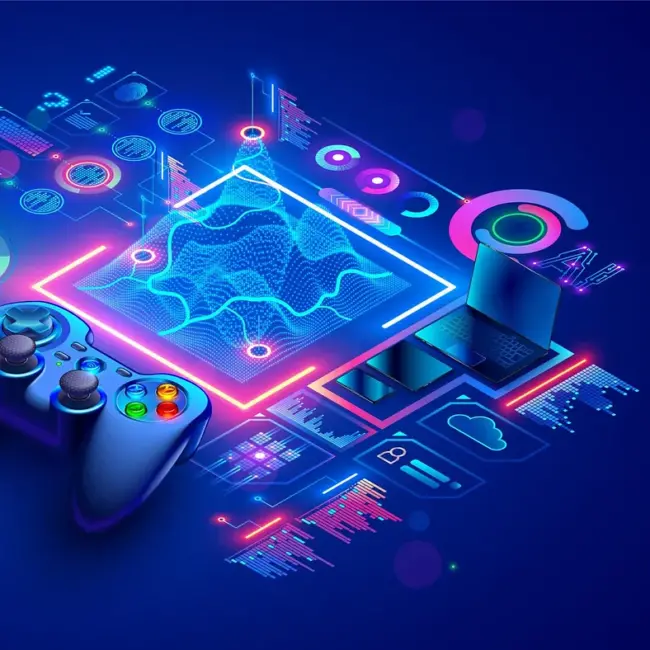AI is an invaluable tool in protecting players and promoting safety.
Video game companies use both human moderators and advanced technologies to promote player safety, from preventing security incidents, to identifying cheating and bullying, to stopping and reporting unlawful and malicious activities. Machine learning, which is a type of AI, that can be used as an additional tool to complement these efforts.
For example:
Activision’s Call of Duty launched a voice chat moderation system that uses AI to identify in real-time and enforce rules against toxic speech – including hate speech, discriminatory language, harassment and more.
Riot Games’ League of Legends and VALORANT both depend on AI for an auto-mute feature, which intercepts harmful language in text chats before it can be seen by other players. Players who try to send disruptive messages are automatically muted and informed that their in-game communication capabilities have been suspended. VALORANT also uses AI for in-game voice chat moderation.
Xbox uses a range of AI models to detect toxic content including Community Sift, an AI-powered and human insights-driven content moderation platform that classifies and filters billions of human interactions per year, and Turing Bletchley v3, a multilingual model that scans user-generated imagery to ensure only appropriate content is shown.
AI tools can help make games more immersive for players, give developers a more creative experience and potentially enable a more diverse range of developers to build great games.
Developers can use AI tools to create background content and assets, like creating terrain and landscapes, so that the game is more immersive and engaging for players. AI can also be used to complement aspects of game development such as code generation, animation, sound and music, natural language processing and localization.
The use of AI programs can free up time for artists to concentrate on the more creative aspects of making novel in-game content.
For example:
Electronic Arts uses an AI-powered technique called Swish for developing character uniforms in Madden NFL. Swish is a real-time machine-learning-based cloth simulation technique, used to generate realistic cloth deformations and wrinkles for NFL player jerseys. This technique makes character details more realistic by predicting cloth shape from the pose of a character’s skeleton.
AI tools also enable more functionality within video games. Xbox’s Forza Motorsport Drivatar creates AI-powered opponents that give players realistic experiences that feel dynamic and just like real races. Current Drivatars work with every car and track combination, including car upgrades and changing weather conditions, and include varying difficulty levels for players to customize.
AI tools can be used to generate speech and action responses from non-player characters (NPCs, or the secondary characters that operate in the background of games) that a player may interact with in a video game.
An open world game can run more than 100,000 lines of dialogue. Ubisoft is experimenting with its generative AI scriptwriting tool, Ghostwriter, developed with writers to help streamline their creative iteration workflow by generating extensive volumes of “barks” – the dialogue lines for NPCs. These lines don’t primarily contribute to advancing the plot but serve to simulate a vibrant, living world. By using this tool, writers can allocate more time to concentrate on developing storylines and other essential narrative elements.
Developers can use AI tools to identify and fix bugs, and protect against vulnerabilities in video games and other software programs, which may be exploited by bad actors.
Ubisoft partnered with Mozilla, creators of the Firefox web browser, in the development of a coding assistant called Clever-Commit. This AI evaluates whether or not a code change will introduce a new bug, and proactively fixes it by learning from past bugs and fixes. By applying Clever-Commit to both games and web browsing, Ubisoft and Mozilla increase the knowledge of the AI’s toolbox.
Protecting and encouraging innovation in games.
AI-enabled player safety and design tools are low-risk applications that enhance the entertainment experience in video games.
A rational and evidence-based approach to AI regulation helps ensure a competitive environment for innovation. Lawmakers and regulators should continue their close consultation with industry and stakeholders who are developing innovative products and services using AI – and who will need to maintain that pace of innovation.
Ensuring intellectual property rights are protected.
As governments and intergovernmental organizations begin reviewing intellectual property laws and agreements to determine whether changes are necessary with respect to AI, it is worth noting that laws and regulations already exist that can address the advent of new technologies and that intervention should take place only when a market failure can be identified. Robust rules on intellectual property rights preserve incentives for companies in the U.S. video game industry to continue producing the engaging content and interactive experiences that consumers enjoy.
Harnessing human capital to drive creativity and innovation.
The U.S. video game industry harnesses human talent to drive creativity and innovation, which requires a robust pipeline of highly-skilled workers to produce the next generation of video games and services for the U.S. and global markets. Toward that end, the industry supports the training of American students for Science, Technology, Engineering, Art and Math (STEAM) careers and preparation of the American workforce for future opportunities.














